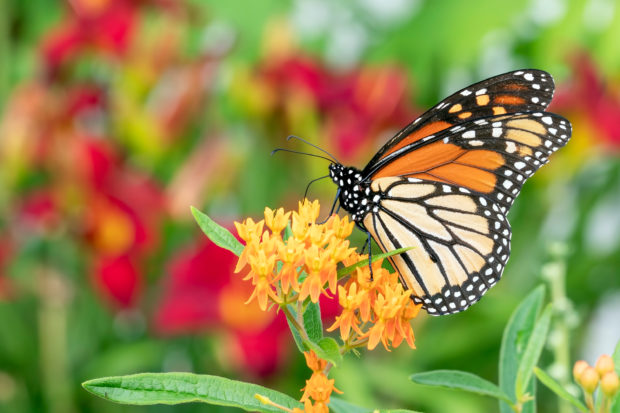
On July 21, the International Union for Conversation of Nature (IUCN) designated the migratory monarch butterfly as endangered and placed the insect on the IUCN Red List of Threatened Species.
Global populations have plummeted between twenty-two and seventy-two percent, with western populations plunging ninety-nine percent.
The species has been struggling due to various environmental stressors– including habitat loss, a decrease in food availability, and rising temperatures that have impacted migratory patterns.
And while people around the globe may feel helpless in saving the famous butterfly, there is actually a lot that community members can do at home.
In your own backyard, you can stop using pesticides immediately. The harmful chemicals can not only damage the butterflies’ food sources but also kill the monarchs altogether.
Planting milkweed in your yard can also greatly support migrating monarchs by providing them with a safe food source.
The plant can be found across North America, so you do not have to worry about introducing an invasive plant species.
Native milkweed plants can be found across the United States using this Milkweed Finder tool courtesy of Xerces Society.
And if you are open to planting milkweed on your property, you might also be interested in propagating an entire monarch habitat.

Sign up for Chip Chick’s newsletter and get stories like this delivered to your inbox.
The National Wildlife Federation website offers numerous resources to help you create a monarch safe haven: including appropriate shelter cover, water access, places to raise young, and more.
Finally, you can also support greater community efforts to protect the species. A priority in monarch conservation is the protection of America’s native grasslands.
They are home to milkweed and nectar plants– which are essential to both caterpillars and adult butterflies.
However, over ninety percent of America’s grasslands have been converted for developments and croplands– only contributing to monarch’s habitat loss.
To join the National Wildlife Federation in the fight against grassland loss, you can visit the link here.
Another helpful community effort is the Highway Habitat Corridor. This program is a partnership between the National Wildlife Federation and the U.S. Fish and Wildlife Service to plant both milkweed and nectar plants along common migratory flight paths. To learn more about the effort and get involved, visit the link here.
And while breeding and releasing monarch butterflies might seem like a helpful practice, environmental experts have actually warned against this.
The captive-bred butterflies can introduce parasites, reduce genetic diversity, and actually lead to further population loss.
To learn more about the dangers of captive breeding, you can visit the link here.
If true crime defines your free time, this is for you: join Chip Chick’s True Crime Tribe.
He Canceled His 14-Year-Old Daughter’s Date, And After That, She Said That She Hated Him
Her Cousin’s Husband Is An Absolute Creep And She Finally Exposed Him For What He Is To Everyone












